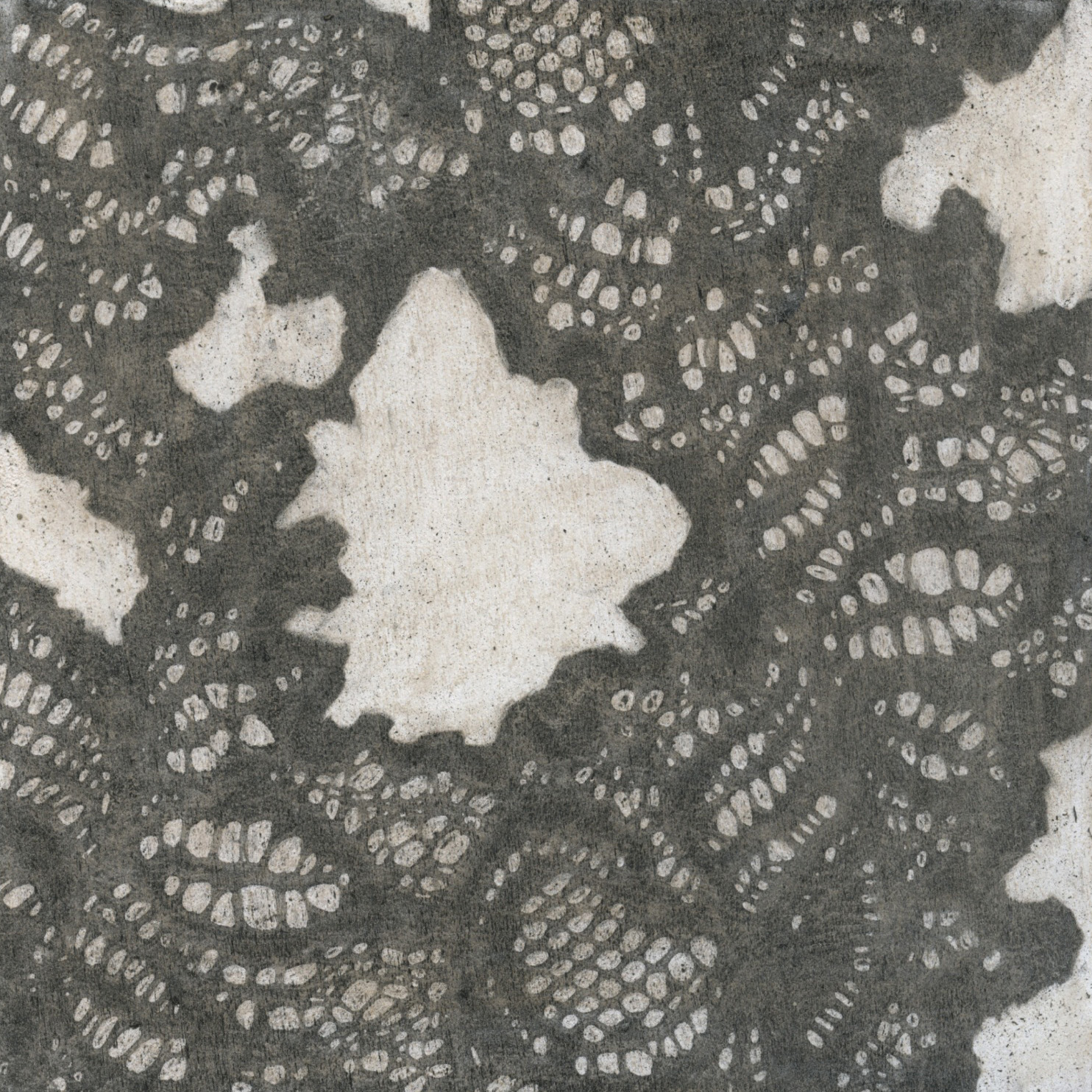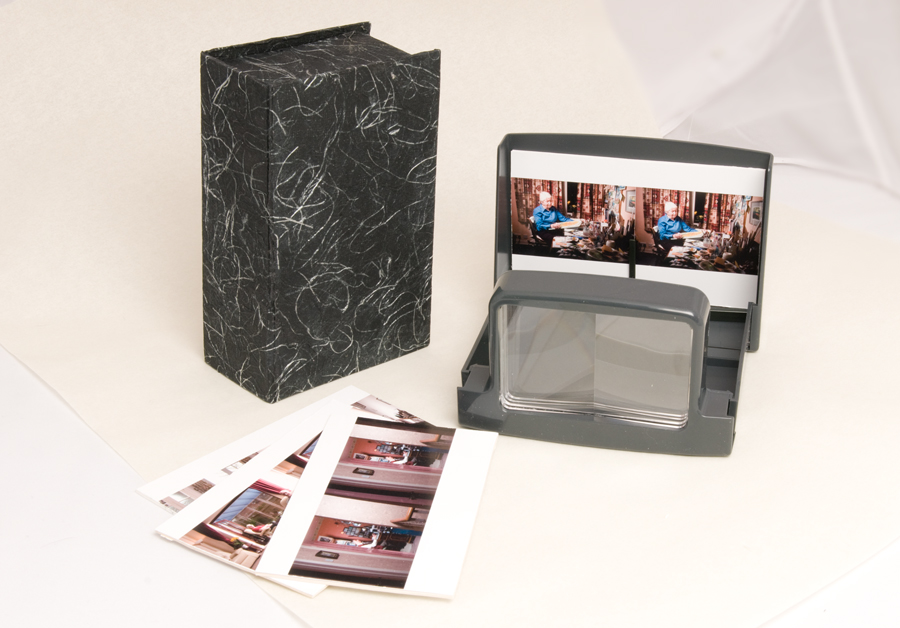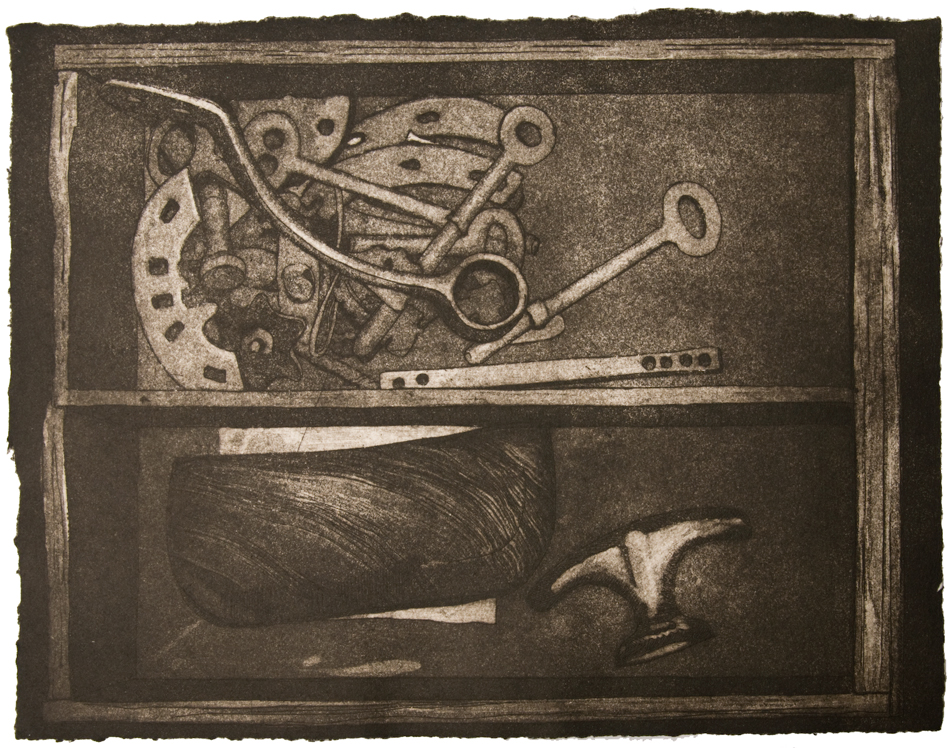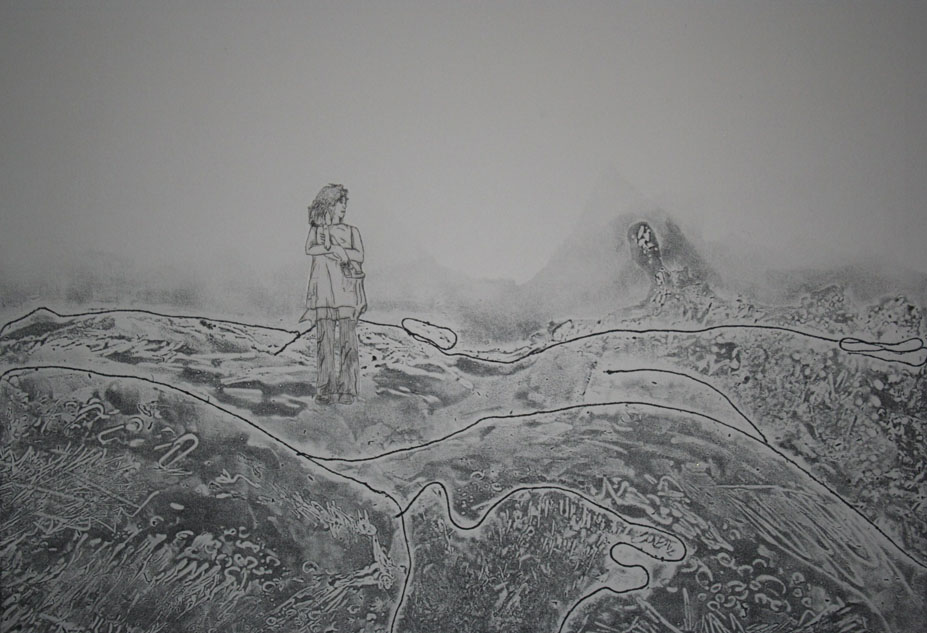
Charcoal on wood
Elizabeth Clayman
Elizabeth Clayman graduated with a BA (Hons) in English and Philosophy from Mount Holyoke College, USA and an MFA in Fine Art from the University of Pennsylvania, USA She worked in Archaelogology and Anthropology Institutes and Museums in both America, at the UPENN Museum of Archaeology and Anthropology in Philadelphia and at the Institute of Archaeology, UCL London, drawing ancient artifacts and site plans for publication in scientific journals, books and as reference documentation for collectors. She has shown her artwork in both the USA and England and is currently producing and participating in various artist led collaborative projects.
The motivation for the re:collections project were the contents of some innocuous cardboard boxes in the store rooms of the Tunbridge Wells Museum. These boxes contained an assortment of old trimmings and bits of lace that were all once part of old articles of clothing - some grand, some humble. Some were very intricate in their craftsmanship and others quite crude. Though the contents were of varying quality both in condition (some just fragments) and quality, they were all individually and carefully layered between sheets of translucent tissue paper. Their origins varied from the local to the exotic, yet they were all archived together.

Stereoscopic photographs and viewer
Ellen Montelius
Ellen Montelius achieved a BFA degree in Photography at Massachusetts College of Art, USA, MA in Teaching Art from Tufts University, USA and a HND in Graphic Design from University for the Creative Arts, UK. She has taught art and photography at educational institutions in the US, France and the UK and currently organises workshops with all age groups in digital photography and mixed media. Her commercial work is to produce artist led collaborative projects, commissioned portraiture assignments and recording museum collections for archival purposes and promotion.
The inspiration for the re:collections project started with exploring and investigating the Victorian stereoscopic viewers and the photographic prints from the collection of the Tunbridge Wells Museum. Many of the sepia toned prints illustrate a foreign geography and culture and this led to contemplating the impact the three-dimensional images had on the nineteenth century viewer. This low-tech 'virtual reality' world had similarities to what the twenty-first century Internet technology provides for us, an access to information in the comfort of one's own home.
The intention of this project is to turn the camera toward a more private and intimate world, an individual's room and highlight the outside environmental influences. The rooms in the photographs contain evidence of memory, experience, travel and culture, in reference to the content of the Victorian stereoscopic prints and the people chosen were of a certain age to convey the passing of time, life experiences and knowledge. The style and intimate quality of the stereoscopic viewer provide a unique three-dimensional visual experience.
More of Ellen Montelius' work will also be exhibited this month in the Ko-ax Photo Exhibition at Mascalls Art Gallery

Etching and aquatint
Lindsay Connors
Lindsay Connors graduated from Greenwich University in 2008 with a BA (Hons) in Fine Art. She is involved in a number of Kent and London based artist's co-operatives, and has worked collaboratively and individually on site specific projects and local authority projects. Her practice utilises a wide variety of media including printmaking and she works as a visiting Lecturer in Printmaking and Art & Design at West Kent College.
“I am drawn to the humble and everyday objects and materials that we encounter in our daily lives. In isolating and paying attention to these often overlooked fragments, I highlight the significance of the insignificant, and look for poetry in the unexpected.
The discovery of the cobblers chest, - utilitarian, scuffed, unloved and falling apart, with its drawers of rusting and decaying tools and objects, left untouched since it's was last used, struck a chord with my practice. Each drawer was not only an intriguing 'found composition' of texture and detail, but was also a time capsule. The forgotten detritus and equipment left behind seemed to carry something of the energy of the previous owner, each drawer adding a chapter to the story.
The laborious process of recreating the drawers as etchings rhymes with the painstaking craftsmanship of the cobbler, and monumentalises their overlooked status.”

Etching
Niki Campbell
Niki Campbell graduated from Greenwich University in 2008 with BA (Hons) in fine Art. She is a founder member of Eden Valley Artists (EVA). She has been involved with collaborative projects and has exhibited her work in London, Kent and Sussex. She was also the curator for EVA in the Window project. Niki has worked as a visiting artist to schools, and community centres. She runs printmaking workshops and enjoys tutoring young people. She currently works as an art technician in Tunbridge Wells.
“A multimedia artist, the work ranges from small detailed drawings to large walk-in installations.
Questioning traditions and accepted norms are an integral part of the work. Familiar objects and objects infused with cultural meaning are subverted to create a new narrative and change our perceptions of what is familiar and challenge our acceptance of it.
"The History of Little Fanny" Series of prints on paper
The item from the archive that gripped my imagination and inspired me was "The History of Little Fanny". It is a story about a free spirited little girl who wants to go out and parade in her fine clothes. But her mother says: No. The story depicts a typical Victorian lesson: If you don't listen to your elders, you will come to a bad end. Although the story seems unnecessarily harsh to our 21st Century sensibilities, the issues of young people's vulnerability remains with us today.
I identified with the girl's free spirited nature and determination. She went out anyway, despite her mother's admonishments. I thought it would be interesting to visualise how and where the story would play out, if it were to take place in Tunbridge Wells. I decided to try to bring the story to life by placing a local girl in key Victorian locations in and around the town. After researching potential locations, I asked a young friend to help model for a photo shoot. I felt that the traditional format of printing on etched plates would fit the period nature of the story. I restricted myself within the discipline of tight and detailed drawings just as Fanny was restricted by the strictures of her mother and Victorian society. I set about making a series of etched plates: taking on the job of the story's illustrator. From the etched plates, I made the series of prints, which you see displayed.
The locations depicted are: on the rocks near the cricket pavilion; Jordan House; the Pantiles; Calverley Park and; Jerningham House, Mount Sion.
Bells installation. Handmade paper
After reading Susan Wicks' poem "The Cricket Pitch Bells" and hearing their sound through the poem, I was struck by the realisation that the bells might never sound again as they were stored in the museum's archive. I had sympathy for them down in the dark and wanted to portray their fragility, age and potential decay. The bells are impotent their purpose has passed away. I hand cast soundless bells from handmade paper. ”